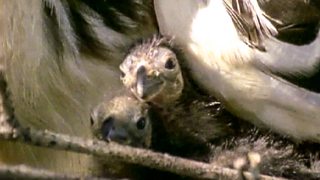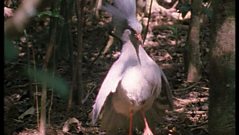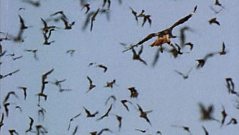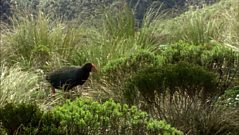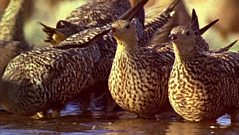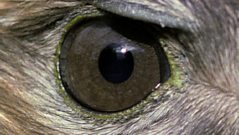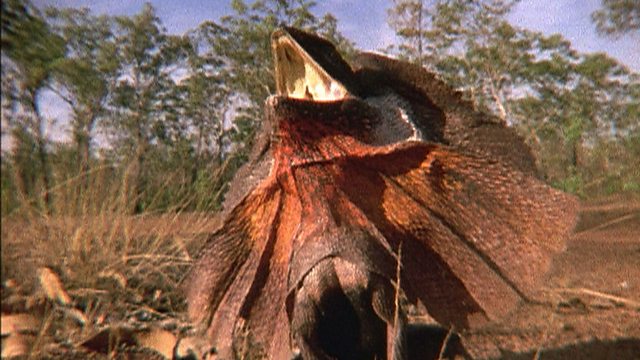
Getting airborne
How reptilian scales might have evolved into feathers to give rise to birds.
Feathers are made of keratin, as are the scales that many birds still have on their legs - and that reptiles have all over their body. Because they are covered in scales, reptiles like the skink have to seek shade in the heat of the day. But if the scales became fibrous they could be fluffed up to let in cool air during the day and then closed down at night to keep in the warm air. Reptile scales may thus have become feathers. But how did feathers get long enough to enable flight? The frilled lizard suggests an answer. When it is threatened it spreads the great frill around its neck, and if that does not scare off the enemy then it runs away on its hind legs. If a reptile like this had developed feathery scales on its forelegs and then spread them out, it might easily have been able to lift into the air, thereby escaping a land-bound predator. Or maybe that early reptile did not live on the ground, but climbed in the trees searching for food, just as the little flying lizard of Borneo does today. It glides from tree to tree and has developed wings from flaps of skin supported by elongated ribs. If that early reptile had especially long flaps of skin on its arms then it too would have been able to glide from tree to tree. And maybe its arm muscles would have been strong enough to allow it to make a few flaps to help it on its way.
Duration:
This clip is from
Featured in...
![]()
麻豆社 Nature
Be captivated, informed and inspired by the world's wildlife.
More clips from To Fly or Not to Fly?
-
![]()
Weka Territory
Duration: 01:08
-
![]()
Feet on the ground
Duration: 00:51
-
![]()
Bat buffet
Duration: 03:09
-
![]()
Back from the brink
Duration: 02:17
More clips from The Life of Birds
-
![]()
Weka Territory—To Fly or Not to Fly?
Duration: 01:08
-
![]()
Feet on the ground—To Fly or Not to Fly?
Duration: 00:51
-
![]()
Thirst quencher—The Limits of Endurance
Duration: 03:10
-
![]()
Food on the run—Meat-Eaters
Duration: 02:12
